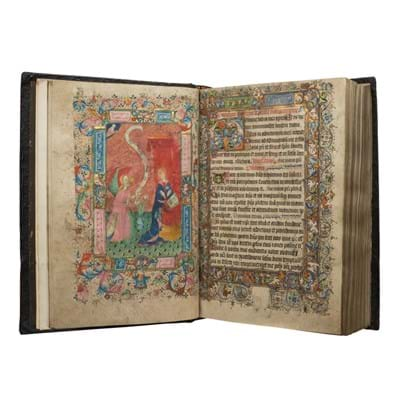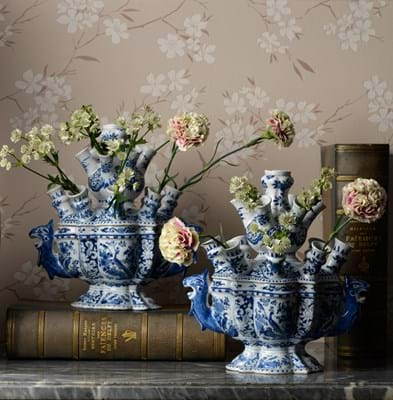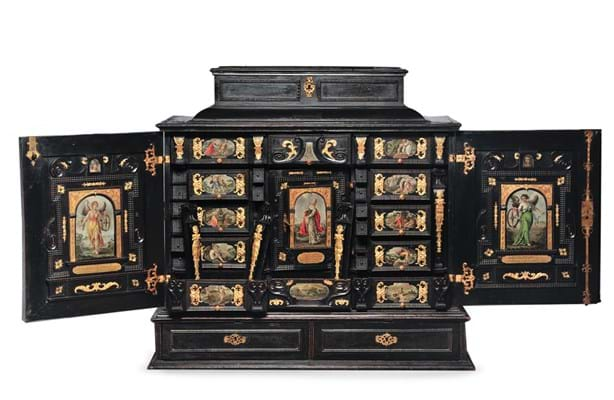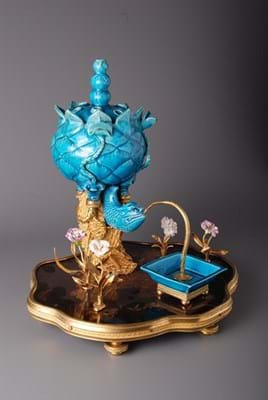The Saxby Psalter-Hours

Specialising in Medieval and Renaissance manuscripts, Les Enluminures brings The Saxby Psalter-Hours, an English-language manuscript which is rare in comparison with continental examples. The c.1425 manuscript opens with a full-page picture, a prime example of the International Gothic art style. It also includes 20 examples of signed illuminations by professional London artists, perhaps Giles Banaster and Robert Hillary. The parchment manuscript is written in Latin and Middle English and is offered at the fair for a price in the high six figures.
Delftware flower vases

Aronson Antiquairs, an Amsterdam-based specialist in Delftware, brings this pair of c.1695 blue and white bowl and cover flower vases, formerly in a Dutch noble collection. The delftware vessels are each marked in blue for Adrianus Kocx, the owner of De Grieksche A (The Greek A) factory from 1686 to 1701. The pair is available for a price in the region of $250,000.
Collector's Cabinet

The Munich gallery Kunstkammer Georg Laue returns for its second year at the fair and brings a collection of more than 30 court silver cups and vessels made of amber, rock crystal, agate, jasper and lapis lazuli. The schatzkammer – or treasury chamber – collection is presented alongside this collector’s cabinet, made in Augsburg c.1620, which is fitted with miniature paintings by Hans Panzer. The panels show personifications of good and bad luck as well as famous ill-fated lovers. The cabinet is offered for €120,000.
Happe watercolours

Antiquariaat Forum BV, based in ‘t Goy in the Netherlands, brings a series of watercolours completed by Andreas Friedrich Happe (1733-1802) in Berlin between 1790-94. The series includes depictions of flowering and fruit-bearing plants and trees and is offered for €850,000.
Perfume fountain

This perfume fountain is offered by the Netherlands gallery Vanderven Oriental Art. The ornamental piece is made up of various elements, the largest of which is from Kangxi Period (1662-1722) China: the turquoise glazed biscuit porcelain lotus pod. The glaze was particularly popular in 18th century France where the colour was known as ‘bleu celeste’ and the fountain is otherwise of French 18th century production. A carp spouts a stream of gilt bronze ‘water’ into a porcelain basin and four gilt bronze flower stems support blooms made of European porcelain. A similar example from the collection of Marie Antoinette is in the Louvre and this piece is offered for €55,000.







